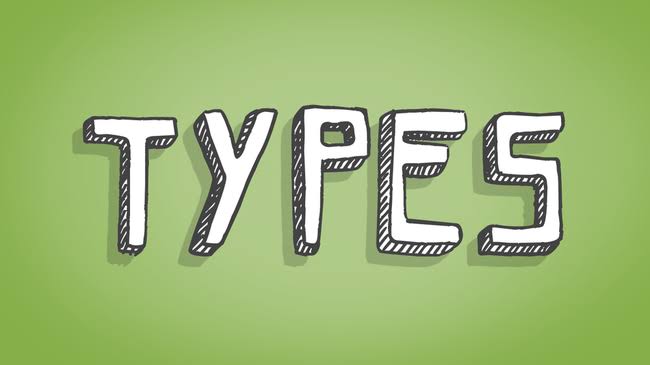Table of Contents
Online advertising for small business has become a phenomenon with high demand in today’s digital market. This is because the online space is wide, and traditional advertising methods alone cannot solve small businesses’ challenges.
This article will guide you through the spectacular basics of online advertising for small businesses. We will examine the pertinent role of online advertising in fostering the sales of small businesses, the types and merits.
Then, we will conclude with how to conduct online advertising for small businesses. If you are an upcoming business owner, or one with an idea to start one, or a marketer at one, then this article is mostly beneficial to you.
What is an Online Advertising Method?
Let us begin with the essentials. Online advertising is the practice of promoting products and services on the Internet through various digital channels or social media platforms.
The aim of online advertising is to reach a target audience, generate leads, generate brand visibility, and drive conversions. It is a game changer for small businesses, offering advantages like cost-effectiveness, targeting precision and measurable results.
For instance, consider owning a modest clothing business, and you want to attract more customers to your website for online orders. With online advertising, you can create ads that specifically target customers searching for terms like “modest dinner outfits”.
What Are The 7 Types Of Online Advertising?

Numerous forms of online advertising are designed to reach specific audiences and serve different marketing objectives. These types of online advertising leverage the internet to engage with potential customers and optimise campaigns for better results. Some of them include:
- Display advertising: These types are adverts that pop up on websites. They can be in the form of video, audio, graphics or images. Display ads play a great role in fostering brand visibility.
- Social Media Marketing: They are well-crafted adverts placed on social media platforms like Facebook, WhatsApp, and Instagram, to mention but a few. These ads are often put out to attract a certain category of audience demographic.
- Email Marketing: This involves sending promotional messages/ materials directly through an individual’s mail. Such messages can include newsletters, announcements of special offers or even personalized messages to further connect with the potential customer on an in-depth level.
- Influencer Marketing: This happens when businesses collaborate with social media influencers and content creators to promote a brand’s image, product, and services to the influencer’s audience, thus skyrocketing the purchase rate.
- Content Marketing: This type of online advertising requires brands to create valuable content (blog posts, articles, infographics, audio, videos) that educates or entertains internet users while subtly promoting their products or services.
- SMS Advertising: Here, businesses send promotional messages, offers, or information through text messages to their leads.
- In-app Advertising: This type of advertising is an effective method that involves displaying ads within mobile apps that are part of an individual’s routine. The ads, in turn, generate leads for such businesses.
The best type of online advertising for small businesses depends on the target audience and specific goals. It is often encouraged to start with one or two types and track the effect before proceeding to adjust the strategy based on what is best for the business.
READ ALSO: How to Use the Right Media Partner to Sell Your Product
What are the Merits of Online Advertising for Small Businesses?
The advantages of online advertising for small businesses are numerous, especially in today’s dynamic digital world. They include but are not limited to:
- Cost Effective: Small businesses get the opportunity to spend less to reach a wide audience. Many online advertising platforms offer budget flexibility and pay-per-click mode, ensuring that you only pay when someone interacts with your ads.
- Measurable Result: Online advertising provides data and analytics, allowing small businesses to track their ad metrics in real-time. Such metrics include click-through rate, conversion rates, and return on investment, enabling small businesses to optimise campaigns for better results.
- Flexibility: Online advertising hands over the control rein to businesses such that they have total power over their ad campaigns to adjust budgets, target certain segments, halt or resume campaigns as needed, and refine ad copies.
- Relatively less time-consuming: The time and effort invested in creating online advertising copies/ messages and distributing them is relatively shorter than traditional advertising.
- Wider Reach: Online advertising can catapult small businesses to go beyond local audiences and extend to global audiences. This is mostly an edge for small businesses with goods or services that have a broader appeal.
READ ALSO: Competitive Analysis for Entrepreneurs: A Detailed Guide (2023)
How to Organize Online Advertising for Small Businesses

Organizing online advertising for small businesses effectively involves careful planning and a structured approach to maximize the impact of your advertising campaigns. Here are the key steps to help you organize online ads:
- Set clear objectives: Before diving into online advertising, define your advertising goals, such as increasing website traffic, generating leads, driving sales, or boosting brand awareness. Ask what you want to achieve. Who is your target audience? Clear advertising goals coupled with business objectives will guide your advertising strategy.
- Define your target audience: Curate a detailed list of attributes of your target audience to understand your ideal customer’s demographics, interests, and behaviours. This information is crucial for effectively targeting your ads on any platform you choose.
- Decide the right advertising platform(s): Your advertising platform/ channel should be a product of market research on your target audience’s preferences and goals. These platforms include Google Ads and social media platforms (Facebook, Instagram, Twitter, TikTok, and LinkedIn). Each platform has its strengths, so choose the one that best suits your business goals.
- Allocate a budget: Determine your advertising budget based on your set objectives and the platforms you plan to use. Consider both daily and overall campaign budgets.
- Schedule your ads: Do research about the best times and days to display your ads. Many advertising platforms allow you to schedule when your ads will run. This will ensure that you do not miss the traffic time when your target audience will mostly see your advert.
- Track Your Ad Performance: Monitor key performance metrics like click-through or conversion rates and measure your advertising efforts’ ROI. This will enable you to make a well-informed decision on the best strategy to employ. Use the data to adjust your campaign for better results.
- Competitive analysis: Monitor the advertising strategies of your competitors to identify loopholes and trends to thrive in the market.
- Leverage Social Media Advertising: The power of social media in providing advertising opportunities cannot be underrated. Use your brand’s page to create engaging content, target a specific audience category, and boost your brand visibility.
By following this structured approach, you can rest assured as a small business owner that you have effectively organised online advertising for your brand to achieve your goals while maximizing the return on your advertising investment.
READ ALSO: How to Generate Leads for Business Using Advertising (2023)
Targeting Strategies for Online Advertising
When creating a market plan for online advertising for small businesses, the term “target audience” refers to the specific demographic of individuals you aim to convert into your customers. There are various targeting strategies that you can deploy to reach your desired audience more effectively. They include:
- Demographic Targeting: This focuses on specific demographic factors such as age, gender, income, education, and marital status to personalize ads to a particular audience category.
- Geographic Targeting: This strategy targets users based on their location. It decides whether a business aims to effectively reach the local or global audience.
- Behavioural Targeting: It makes use of social media users’ data and interests to display relevant ads, ensuring that the content matches the users’ online activities and preferences.
- Retargeting: Small businesses can use this to target users who have previously interacted with their website or ads, encouraging them to return and complete desired actions.
- Keyword Targeting: This focuses on specific keywords or organically relevant web pages to display ads when users search for relevant terms content.
Conclusion
Now that you are equipped with knowledge about the essentials of online advertising for small businesses, it’s time to take that bold step towards the success of your business.
Remember that you wield the power to take your business to any level, so Just take it one step at a time and watch your business flourish beyond expectations.
READ ALSO: How to Do Market Research for Startups (2023)
FAQS
What is the best advertising platform for small businesses?
The best advertising platform for your small business is one that is chosen based on accurately conducted market research on the lead’s preferences, the nature of your business, budget and set objectives. Such platforms include Google ads, Facebook, Instagram, LinkedIn, and Pinterest, to mention but a few.
How can I promote my business online for free?
Free promotion of businesses all balls down to creativity, great strategies and knowledge about online platforms. You can create an account on any social media platform for your business where you update your target audience about offers and information regarding your brand. Giveaways, collaborations, and online communities are also great strategies to deploy.
What are the examples of online advertising?
For social media marketing, examples of online advertising include sponsored posts on Facebook, promoted tweets on Twitter, or Instagram story ads. Examples of display advertising include banner ads or pop-ups.

